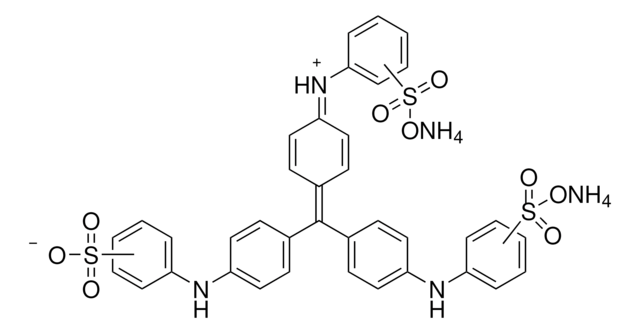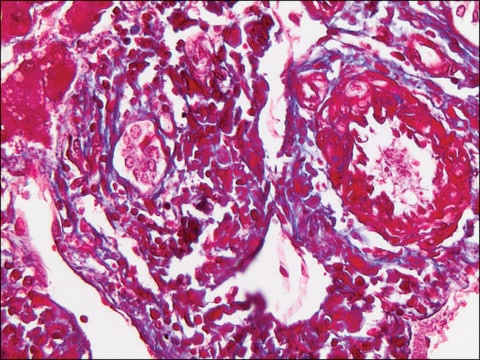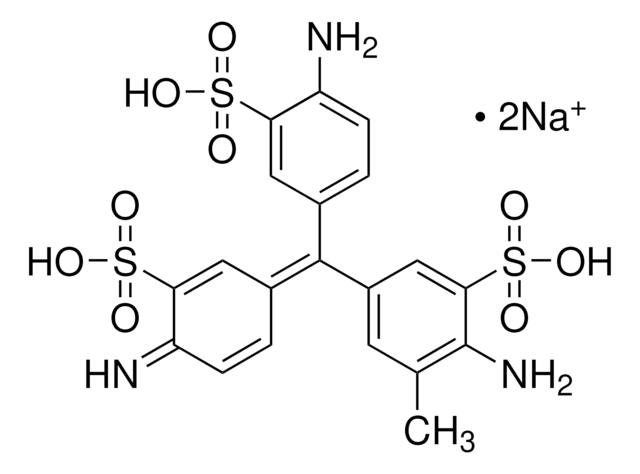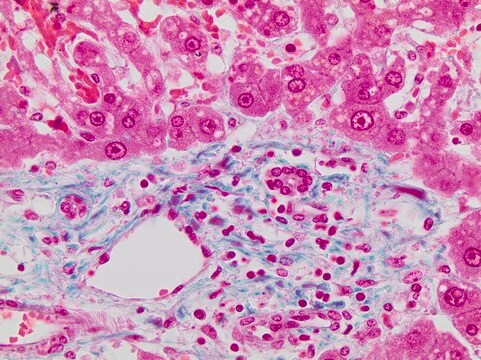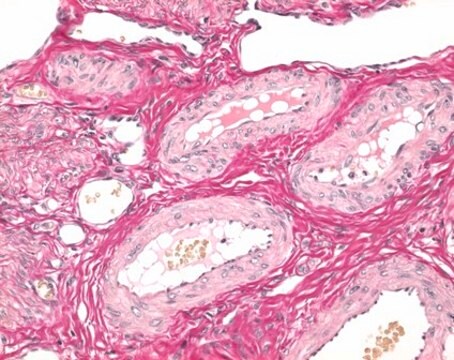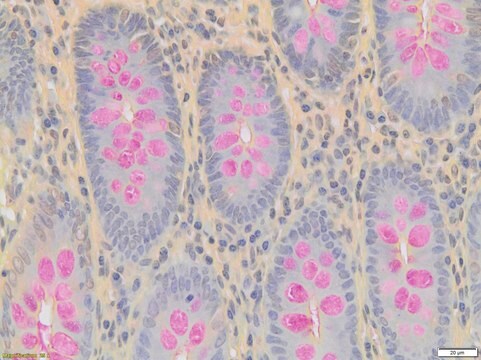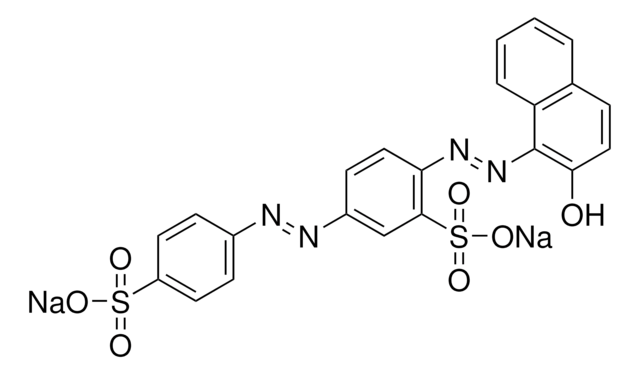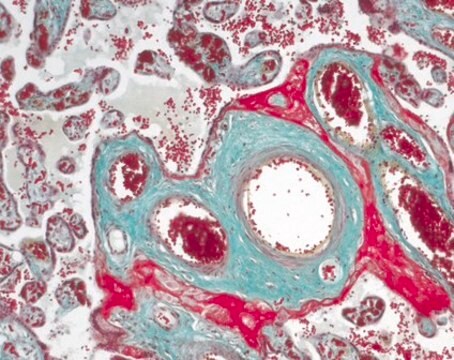B8563
Aniline Blue solution
2.5% in 2% acetic acid
Synonym(s):
Acid blue 93; Cl 42780
Sign Into View Organizational & Contract Pricing
All Photos(1)
About This Item
Empirical Formula (Hill Notation):
C32H25N3O9S3Na2
CAS Number:
Molecular Weight:
737.73
UNSPSC Code:
41116121
NACRES:
NA.47
Recommended Products
form
liquid
Quality Level
concentration
2.5% in 2% acetic acid
technique(s)
microbe id | staining: suitable
color
dark blue
solubility
water: soluble
λmax
0.21-0.37 at 597-603 nm
application(s)
diagnostic assay manufacturing
hematology
histology
storage temp.
room temp
InChI
1S/C32H27N3/c1-23-22-26(16-21-31(23)33)32(24-12-17-29(18-13-24)34-27-8-4-2-5-9-27)25-14-19-30(20-15-25)35-28-10-6-3-7-11-28/h2-22,34H,33H2,1H3
InChI key
LBLFVSANTXZPEX-UHFFFAOYSA-N
General description
Aniline Blue is the traditional name applied to anionic dyes produced by successive phenylation and sulfonation of basic fuchsine. Aniline blue consists of sulfonation products of variable mixtures of phenylated rosaniline and pararosaniline. It is a mixture of methyl blue and water blue. The dye is also known as cotton blue, and ink blue. Methyl blue of aniline blue belongs to the group of triaminotriphenylmethane dyes.
Application
Aniline blue (also known as cotton blue and ink blue) is a component of commonly used polychrome stains. It is used to stain collagen fibers in tissue sections using Masson′s trichrome protocol for staining multiple components. Collagen is stained blue by this method. The dye is suitable for selective staining of callose in plant specimens and staining histones for assessing nuclear maturity. Heidenhain′s AZAN stain and the Mallory′s polychrome stain both entail staining steps using aniline blue-orange G mixtures. Aniline blue is used in Gomori′s one-step trichrome stain and Mallory′s connective tissue stain for tissue including kidney and intestine.
Storage Class Code
12 - Non Combustible Liquids
WGK
WGK 2
Flash Point(F)
Not applicable
Flash Point(C)
Not applicable
Choose from one of the most recent versions:
Already Own This Product?
Find documentation for the products that you have recently purchased in the Document Library.
Customers Also Viewed
Identification of membrane proteome of Paracoccidioides lutzii and its regulation by zinc
Juliana Santana de Curcio et al.
Future science OA (2017)
Lilian C Baeza et al.
Frontiers in microbiology, 8, 2308-2308 (2017-12-13)
The genus
Lan-Tao Gou et al.
Cell, 180(6), 1212-1227 (2020-03-15)
The paternal genome undergoes a massive exchange of histone with protamine for compaction into sperm during spermiogenesis. Upon fertilization, this process is potently reversed, which is essential for parental genome reprogramming and subsequent activation; however, it remains poorly understood how this
Rafal P Piprek et al.
Cells, 8(12) (2019-12-15)
Normal gonad development assures the fertility of the individual. The properly functioning gonads must contain a sufficient number of the viable germ cells, possess a correct architecture and tissue structure, and assure the proper hormonal regulation. This is achieved by
Our team of scientists has experience in all areas of research including Life Science, Material Science, Chemical Synthesis, Chromatography, Analytical and many others.
Contact Technical Service